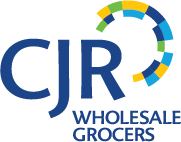The Changing Dairy Industry
Canada’s Food Guide (CFG) was first introduced in 1942 as a tool to help Canadians maintain their health and prevent nutritional deficiencies during wartime food rations. Over the years, the guide and its definition of a healthy diet have undergone numerous transformations.
The Canadian Food Guide develops its official recommendations based on extensive scientific research, expert medical opinions, and the latest nutritional studies. As new research emerges, the guide continues to evolve.
Other factors have historically influenced the contents of the CFG, ranging from the scarcity of specific foods—such as milk in 1944—to the direction of Canada’s food production industry at the time. During the 1970s and 1980s, industry lobbying and political interference led to skepticism about the guide’s legitimacy, with many questioning how much influence major food corporations had on its recommendations. Looking back to the 1942 edition, the emphasis on fats and proteins was largely due to the government’s need to ensure Canadian soldiers had sufficient energy during World War II.
Prior to 2019, the last revision of Canada’s Food Guide was in 2007. The most recent version presents a dramatically different approach, leading many to ask: Is today’s guide more accurate?
The Official Recommendations
The current Canada’s Food Guide encourages:
- Fruits and Vegetables (e.g., sweet potatoes, tomatoes, spinach, strawberries, apples)
- Protein Foods (e.g., nuts, beans, meat, fish, eggs)
- Whole Grain Foods (e.g., pasta, rice, quinoa, bread)
- Water as the drink of choice
The Debate Around Dairy and Meat
There have been various interpretations of the changes in the 2019 edition. Some critics argue that the guide has diminished the significance of meat and dairy products, raising concerns about the long-term implications.
However, it is important to note that Canada’s Food Guide does not discredit meat and dairy. Instead, it has made space for plant-based diets and has shifted focus away from processed foods high in sugar and refined grains.
Unhealthy dietary habits have significantly impacted Canadians’ health. Obesity rates in Canada are at an all-time high, with 64% of adults classified as overweight. The reality is that many individuals consume excessive amounts of fatty meats and dairy products. Striking a balance by incorporating plant-based proteins alongside meat and dairy can have positive effects on energy levels and overall health. Meat and dairy are not the enemy—overconsumption is.
The Future of Dairy and Meat in Canada
While changes to Canada’s Food Guide may impact the food production industry in the coming years, meat, dairy, and refined grains are not disappearing anytime soon. Instead, the focus is shifting toward moderation and informed choices about nutrition.
To learn more, visit: Canada’s Food Guide
Sources:
CBC – Impact on Meat and Dairy Industries









